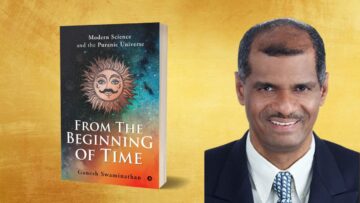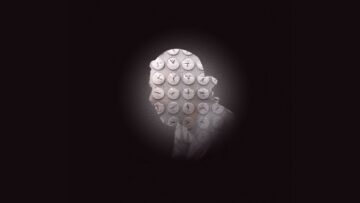Indic Academy is pleased to announce a research project to determine the date of the Mahabharata lead by Sri Abhijit Chavda.
- INTRODUCTION: THE PROBLEM
The Islamic invasions of India were characterized by the complete destruction of India’s great universities: Nalanda, TakshaShila, Vikramshila, Vallabhi, Sharada Peeth, Telhara, Pushpagiri, Somapura, to name just a few. The great library at Nalanda is known to have burned for several months. This resulted in the almost total loss of India’s millennia-old written historical records.
Because of this, we have lost the details of the lineages of our kings and queens, the records of our ancestors’ numerous westward migrations, the names of the great Harappan-era cities of the Sarasvati-Sindhu region, as well as the dates of the Ramayana and the Mahabharata.
This has resulted in the Ramayana and the Mahabharata being regarded are little more than myths by the majority of Indians today.
- ARCHAEOLOGICAL EVIDENCE IS NOT THE SOLUTION
Researchers have employed a variety of methods and techniques, from various disiplines in the course of their investigations. These include archaeology, astronomy, geology, climatology, hydrology, oceanography, radiocarbon dating, accelerator mass spectrometry dating, radioisotope analysis, oxygen isotope analysis, animal bone phosphate analysis, fluvial morphodynamics, sediment analysis, optically stimulated luminescence, archaeogenetics, population genetics, linguistic analysis, archaeohistoriography, and much more, in the quest to resolve the question of the date of the Mahabharata. Hard evidence for the dates, though, has largely defaulted to being based on the available archaeological evidence.
While most of India’s historians have neglected the issue, archaeologists such as B. B. Lal and S. R. Rao have posited dates ranging from ~1600 BCE to ~900 BCE for the Mahabharata war based on archaeological evidence. Other researchers such as A. Ghosh, J. Schaffer, J. Cassel, A. Parpola, S. Gupta, J. Joshi, etc. have proposed a range of dates based on radiocarbon dating of archaeological samples.
However, dating events based on archaeology is problematic given the extremely fragmentary nature of archaeological evidence in India (as opposed to, say, Egypt, Rome or Greece).
Consider the fact that there are known to exist over 1,500 known unexplored archaeological sites along the dry riverbed of the Sarasvati alone. There exist several thousand unexplored sites within the geography of the SaptaSindhu region (Punjab-Haryana-Sindh) alone.
The archaeological evidence we have at present (a handful of partially-excavated sites) therefore does not represent even 0.1% of what lies buried underground in the Sarasvati-Sindhu region.
The same applies to the Ganga, Yamuna, Sarayu, Narmada, Krishna, Kaveri, Godavari, and numerous other river valleys across the length and breadth of the Indian subcontinent (point to be noted: India is a river valley civilization).
Further, because of the destruction of India’s written historical records, there no longer exists any hard evidence, beyond local lore, that conclusively links any archeological site to events in either epic.
It is therefore clear that archaeological evidence cannot, at present, be the yardstick by which ancient events in India’s civilizational history can be dated.
- ARCHAEOASTRONOMY: THE HIDDEN KEY
Archaeoastronomy is the science of deciphering astronomical data in ancient texts and plotting it using the science of celestial mechanics (which is based on classical/Newtonian physics) to obtain extremely accurate dates.
Celestial mechanics is the science behind the precise navigation of spacecraft such as Chandrayaan and Mangalyaan.
Archaeoastronomy works for two reasons:
1) It is impossible to fabricate, falsify, or otherwise invent fictitious astronomical data because the stars and planets traverse precise paths in the sky as seen from the earth. It is trivial for astronomers to debunk fictitious astronomical data.
2) Because astronomy is a precise physical science, it does not suffer from the ambiguity, vagueness and need for “consensus” that plagues disciplines like history, linguistics and the humanities.
Given sufficient data, the dates of certain events can be ascertained to the exact day even if they occurred several thousand years ago. Most events can be dated accurately to the year or a narrow range of years.
Given the wealth of astronomical observational data in Ramayana and Mahabharata texts (astronomers unanimously agree that the astronomical data recorded in the Indian epics is genuine observational data), archaeoastronomy is the key to accurately and scientifically dating the events depicted in both texts.
- THE BABEL’S TOWER OF ARCHAEOASTRONOMY
While astronomy is unerringly accurate, archaeoastronomy has one weakness – its need for 100% accurate interpretation of the astronomical data encoded in ancient texts. If the interpretation is inaccurate, or if some data points are missed, the results (dates) will most likely be wrong.
Several dozen serious researchers are known to have analyzed the astronomical data in the Mahabharata text, and have come up with dates ranging from 950 BCE (F. Pargiter and H. Rayachaudhuri) to 5561 BCE (N. Oak, P. Vartak).
There are at present a large number of competing claims for the correct date of the Mahabharata. Each researcher is adamant that their claim is correct. The situation resembles the mythical Tower of Babel.
The reason for the differing claims is simple: each researcher has translated/interpreted the astronomical data encoded in the Ramayana and Mahabharata texts differently. Some may also have made mistakes in the mathematical calculations.
- THE KEY TO CORRECTLY DATING THE EVENTS OF THE MAHABHARATA
Two very different skillsets are required to correctly decipher the dates of the events:
1) High-level expertise in Sanskrit – to correctly translate and interpret the astronomical data encoded in the texts.
2) Expertise in Astronomy – to accurately calculate the dates of the events based on the astronomical data.
- PROJECT PLAN
The project will run in three phases.
Phase 1: Pre-Translation Phase
-
- Researchers will be invited to present their claims for the dates of the Mahabharata war. A template/form will be created for this and made available online. A deadline will be set, by which such claims can be made.
- A set of Mahabharata texts will be identified as the source text(s) from which the English translation will be done. Examples: Gita Press, BORI Critical edition, Kumbakonam Southern Edition, etc.
- A set of strict, stringent search criteria will be created, to identify verses containing specific words related to astronomy.
- A set of IT experts will parse the texts per the search criteria to identify, isolate & tabulate the relevant verses that have references to astronomical data. These verses alone will be the input for Phase 2.
Phase 2: Translation and Interpretation
Three Sanskrit scholars will independently peruse the verses output from Phase 1. They will go through existing translations, verify the accuracy of the same, and suggest more accurate translations, as required.
The three scholars will be unknown to each other, will work from different locations, and will not be aware of who else is working on the project. This blinded approach will eliminate any possibility of bias or external influence.
At the end of Phase 2, the three sets of translations will be compared by the Project Director. The Project Director will bring the three scholars together, and differences/discrepancies in the translations, if any, will be examined and resolved collaboratively.
Phase 3: Astronomy
Three astronomers will independently calculate the dates of the events based on the astronomical data output from Phase 2.
As in Phase 2, the three astronomers will be unknown to each other, will work from different locations, and will not be aware of who else is working on the project.
At the end of Phase 3, the three sets of dates will be compared by the Project Director. The Project Director will bring the three astronomers together, and differences/discrepancies in the dates, if any, will be examined and resolved collaboratively. This will resolve the question of which researcher’s dating of the Mahabharata War is correct (refer Phase 1.1).
- PROJECT OUTPUT
A monograph, co-authored by the three Sanskrit scholars, with a detailed exposition of their findings in Phase 2.
Research paper(s) co-authored by the three Sanskrit scholars and based on above monograph, with details of specific findings, will be published in Indian or international journal.
A monograph, co-authored by the three astronomers and the Project Director, with a detailed exposition of the astronomical findings from Phase 3.
Research paper(s) co-authored by the three astronomers and based on the monograph in (3) above, with details of specific findings.
A comprehensive project report co-authored by all project members, published as a scholarly book.
- PROJECT TEAM
The project will be lead by Abhijit Chavda along with three sanskrit scholars and three astronomers. A brief back ground of Abhijit in his own words is given below :
“Abhijit Chavda is a scientist and writer.
His work in theoretical physics involves research on the topics of dark matter, dark energy, black hole physics, quantum gravity and physical cosmology. He has authored and co-authored several research papers on these topics.
He has extensive experience in the field of information technology, having worked in diverse roles on numerous technologies and platforms. He is also a writer and researcher of history and geopolitics.
He writes articles for several publications including the Asian Age, the Deccan Chronicle, IndiaFacts, Indic Today, MyNation, OpIndia, and Swarajya. He has written several influential articles debunking the Aryan Invasion/Migration Theory on the basis of science and empirical evidence.
Abhijit is a member of the consultative group to the Principal Scientific Adviser to the Government of India.
He is also a Youtuber and an influential tweeter at @AbhijitChavda. He has been a TV panelist on NewsX, Republic TV and Times Now, and has participated in literary fests such as the Jaipur Dialogues and the Pondy Lit Fest.”






